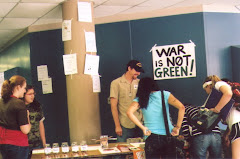This is only a sampling of training resources. You have many options; to explore them, first think about your interests, personal strengths, and skills. Find out which agencies or programs might work for you, and make an appointment to talk with them. Even if one appointment doesn’t work out, you can probably get referred to another agency or program that can help you. Talk with others—your friends, relatives, school counselors, librarians, and adults who do jobs you think you might enjoy. Ask about internships, apprenticeships, and community service projects as well as regular jobs. Sometimes, the best training is on-the-job with a good employer.
American Youthworks216 East 4th Street, Austin, TX 78701, 236-6100
http://www.americanyouthworks.org/
This non-profit charter high school serves ages 16-21 with high school or GED programs, health care, counseling services, social services, job training, and job placement. Helping 1,000 students per year, they also oversee three local Americorps programs: Casa Verde Builders, which teaches construction skills; Environmental Corps, which trains workers to restore and preserve parks and public lands; and Computer Corps, which has students teaching computer skills to children. Americorps provides a living allowance, health care, and (on successful completion) money to use for college or trade school.
Americorps for Community Engagement and Education (ACEE)Charles A. Dana Center, 2901 N IH-35, Suite 2.200, 471-6764
www.utdanacenter.org/acee
Learn teaching skills by doing bilingual literacy tutoring in local elementary schools through this Americorps program. As with all Americorps programs, you learn valuable skills while earning a living stipend and an educational award to use toward college or college loan repayment. For more local and national Americorps programs:
http://www.nationalservice.org/
Assistive and Rehabilitative Services, Texas State Department of (DARS)800-628-5115
Assists persons with physical or psychological barriers to employment, by providing services or equipment needed for them to get a job, including job training or college, as part of an agreed-upon plan. Call for referral to the nearest counselor office.
Austin Community Collegehttp://www.austincc.edu/ 512-223-4222
ACC has more than 80 different job-skills programs that can be completed in a year or less, and also offers 2-year associate degrees and transfers to 4-year colleges. With campuses across Austin, including the new South Austin campus directly across from Crockett High School, ACC provides affordable, high-quality classes and financial aid toward tuition.
Capital IDEA504 Lavaca Street, Suite 1008, Austin, TX 78701, 457-8610
http://www.capitalidea.org/
Trains legally-resident adults, whose incomes qualify them, with training for careers in health care, high tech, or accounting. For full-time students who reside in Central Texas, it provides tuition, fees, books, and child care. Also provides free English, GED, and college prep classes. Has ties with local employers.
Goodwill Industries Youth Services
1015 Norwood Park Blvd., Austin, TX 78753, 637-7100
637-7178, Laura Griebel, Program Manager
http://www.austingoodwill.org/
This program serves persons 14-21 who are in or out of school, who have barriers to employment such as a physical or mental handicap, homelessness, runaway status, pregnancy or parenting, academic skills below grade level, having been through the juvenile justice system, and being or having been a foster child. In 2006, 600 young people are receiving such services as GED, job readiness training, job placement, job coaching, tuition costs, child care, and emergency housing, rent, or utilities. Goodwill also runs the City-County Summer Employment Program for youth; it sponsors case managers in 10 Austin high schools to provide tutoring and related services.
Internships are unpaid or low-paid jobs in which the employer teaches the worker job skills. Ask a school counselor, teacher, Workforce Center employee, or employers who appear at job fairs. Non-profit agencies may be willing to offer worthwhile internships, too, if asked.
Job Fairs are of two kinds: one-employer and multi-employer. Employers may be hiring right away or may take part to gain community visibility and a list of interested people. Many offer on-the-job training, sometimes with college credit or professional certificates. Multi-employer job fairs include the quarterly fair held at the Workforce Center, 6505 Airport Boulevard, and the annual Goodwill-American Statesman Job Fair in May. Dress for an interview and take a current resume; you may be interviewed on the spot. Fairs are announced in classified ads, at employers’ premises, on billboards, on Public Access TV, on websites, and at Workforce Centers.
Skillpoint Alliance
5930 Middle Fiskville Road, Austin, TX 78752, 323-6773
http://www.skillpointalliance.org/
Skillpoint Alliance runs Community Technology and Training Centers (CTTC’s) at Reagan and Travis High Schools and several other locations, giving free computer and business skills classes (must attend an orientation first). Their no-charge 5-week Construction Gateway program (381-4216), one of the top 4 in the U.S., trains about 100 people per year in basic constructions skills: carpentry, plumbing, electrical, and HVAC. Must be age 18, no diploma required; 9 college credits on successful completion.
Texas State Technical Colleges offer certificate and associate degree programs in technical or applied subjects. The nearest TSTC to Austin is at 3801 Campus Drive, Waco, TX 76705 and offers programs in 31 different fields of study. Most of the 4,500 students live in dorms or apartments. Phone 800-792-8784 or ask your school counselor.
The University of Texas at AustinProfessional Development Center, 471-4622
www.utexas.edu/cee/pdc
Professional development classes for certificates (no college credit) in public relations, marketing, leadership, human resources, project management, and process management. Courses given at the Thompson Center at U.T. or at the Jake Pickle Research Center on Burnet Road.
The Urban League
1033 La Posada Drive Suite 150, Austin, TX 78752, 478-7176
Free GED, job-seeking skills, and specific training: typing, keyboarding, computer use.
Central Texas Workforce Centers teach job-seeking skills, offer keyboarding practice, and administer keyboarding and spelling tests required by some employers. Under the Workforce Investment Act (WIA), some job-seekers are eligible for free career testing, transportation costs, skills training, work uniforms, and clothes for job interviews. The 6505 Airport Blvd. Workforce Center coordinates several services for younger job-seekers, such as work internship programs, paid summer jobs, and support services such as child care. For other locations see
http://www.twc.state.tx.us/, where TWC also offers links to training resources, actual job vacancies, forecasts of ‘hot’ occupations, and typical pay rates for various occupations.






